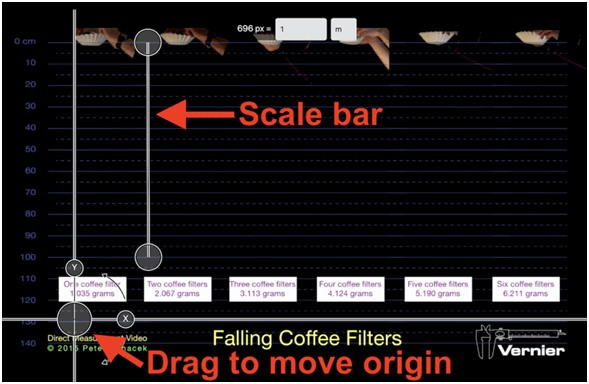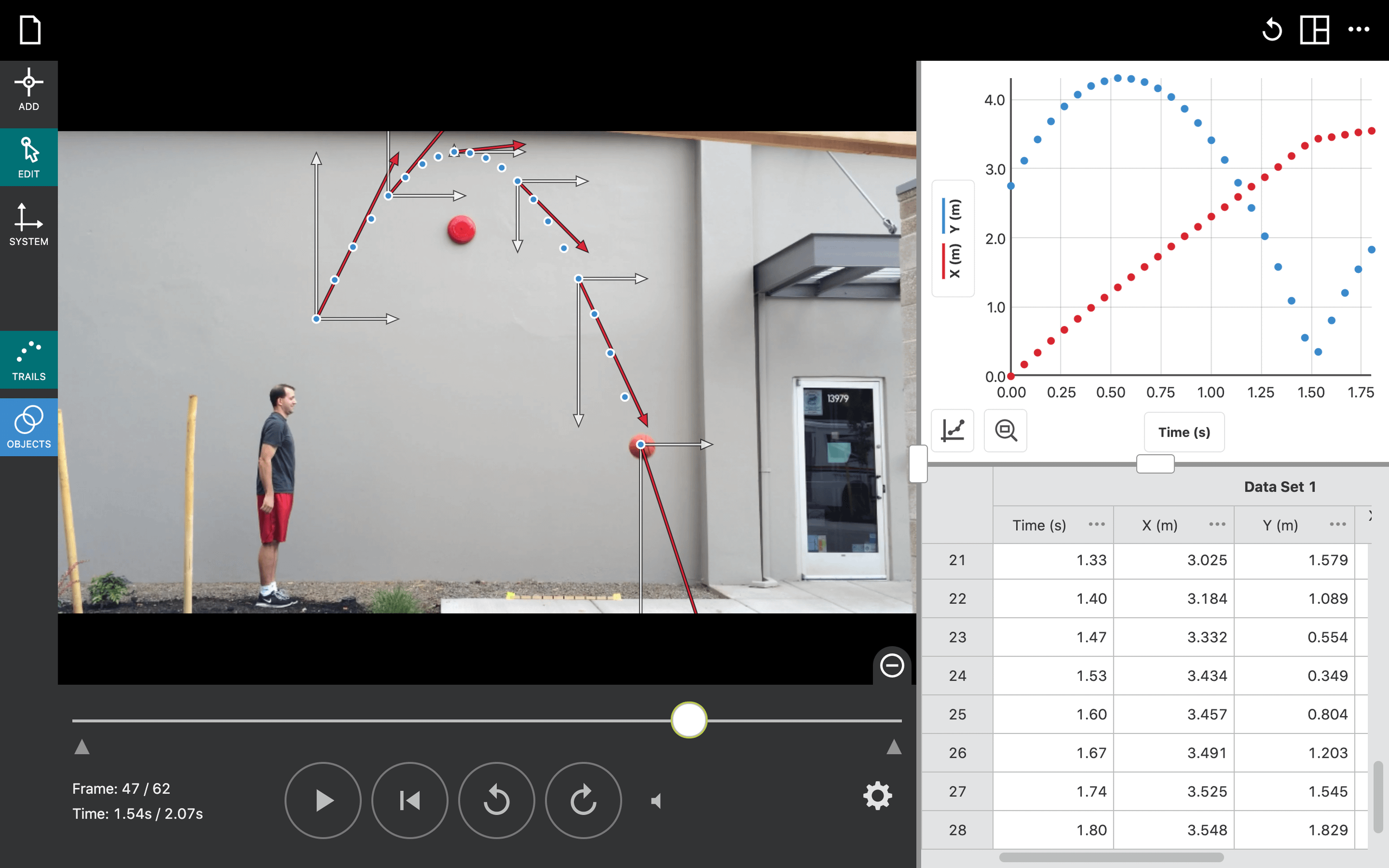
Introduction
When evaluating the forces acting on, and motion of, an object moving through the air, we often simplify the situation by excluding air drag. In many cases, it is appropriate to do so—the object may be shaped such that the drag force is negligible. But, when the object in question is large or moving fast, it is harder to justify the exclusion of air drag.
In this experiment, you will examine the motion of a falling object where air drag is significant. Using the Vernier Video Analysis app, you will analyze a video of falling coffee filters. Since these coffee filters have little mass and a relatively large surface area, the effect of air drag is particularly noticeable. You will investigate features of the position vs. time and velocity vs. time graphs in an effort to model the air drag force.
Objectives
In this experiment, you will
- Use video analysis techniques to obtain position, velocity, and time data for a falling object that experiences significant air drag.
- Analyze a velocity vs. time graph for evidence that the object has reached terminal velocity.
- Evaluate the Fdrag = –bv model for air drag force.
Sensors and Equipment
This experiment features the following sensors and equipment. Additional equipment may be required.
Correlations
Teaching to an educational standard? This experiment supports the standards below.
- International Baccalaureate (IB) 2025/Physics
- The students should understand the qualitative effect of fluid resistance on projectiles, including time of flight, trajectory, velocity, acceleration, range and terminal speed.
Ready to Experiment?
Ask an Expert
Get answers to your questions about how to teach this experiment with our support team.
- Call toll-free: 888-837-6437
- Chat with Us
- Email support@vernier.com
Purchase the Lab Book
This experiment is #6 of Vernier Video Analysis: Motion and Sports. The experiment in the book includes student instructions as well as instructor information for set up, helpful hints, and sample graphs and data.


